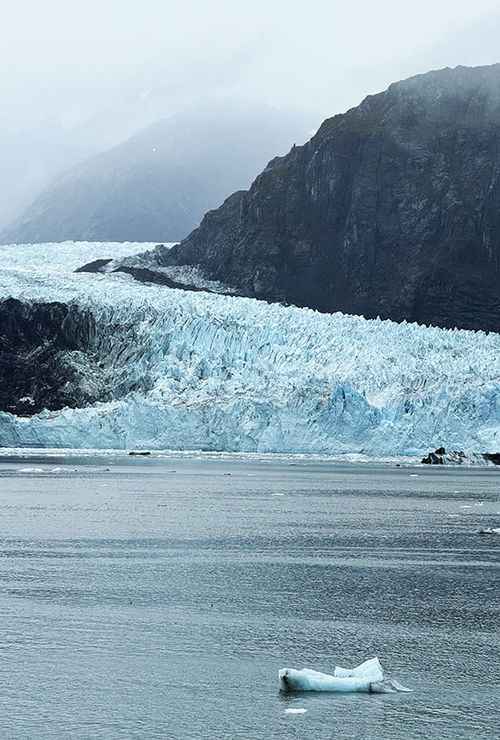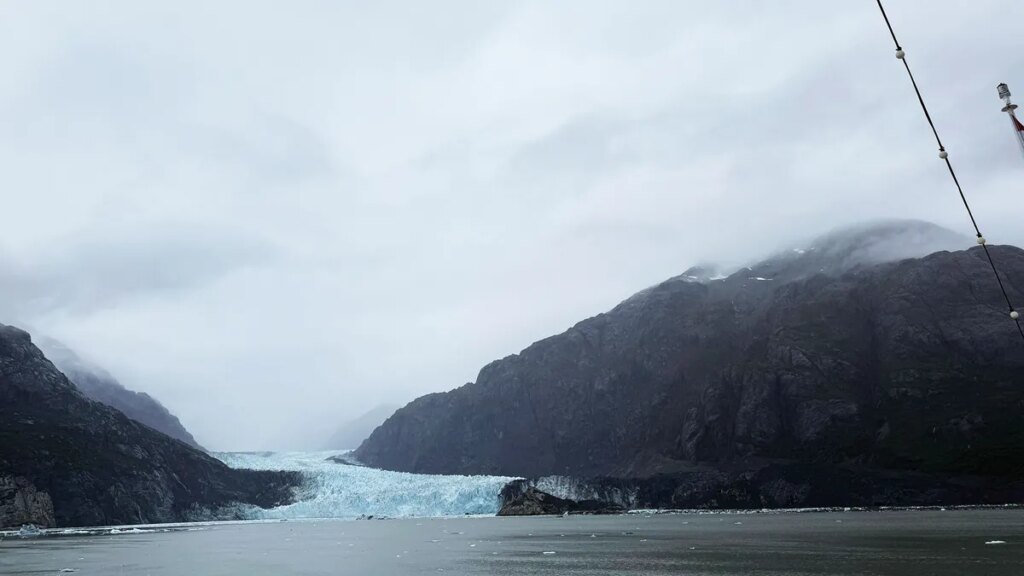Visiting Glacier Bay National Park: Wildlife, Glaciers, and Climate Change Insights
Glacier Bay National Park is a captivating destination renowned for its stunning glaciers and abundant wildlife, making it a high point in Alaska cruise itineraries. With national park rangers on board to enhance the visitor experience, cruises through this remarkable location provide guests with a unique perspective on both natural beauty and the pressing challenges caused by climate change.
Evidence of climate change is becoming increasingly apparent in Glacier Bay. On recent sailings aboard Holland America Line’s Koningsdam, travelers have observed the visible retreat of iconic formations like the Margerie Glacier. National park rangers provide engaging programming that helps guests grasp the urgency of these changes, combining enjoyment of the landscape with informative discussions about the environmental shifts taking place.

Margerie Glacier as seen from Holland America Line’s Koningsdam in September.
As the park undergoes significant transformations, its programs are adapting to enhance visitor awareness. Bill Fletcher, senior director of sales enablement at Holland America Line, expressed optimism for the future of Glacier Bay, stating, “I think it will continue to be the same amazing place that it is today, with a different story being told over time.”
Onboard, ranger Allison Culliney delivered an insightful presentation about the effects of climate change. Utilizing comparative visuals of Margerie Glacier from 2015 and 2025, she highlighted both the challenges and successes surrounding environmental restoration, citing the recovery of the ozone layer and the resurgence of the humpback whale population following conservation efforts.
Culliney acknowledged the emotional weight of climate issues but encouraged a proactive mindset: “It’s only natural to feel overwhelmed and scared at this challenge… But we can still address the world’s immediate problems.”
Wildlife Encounters and Cultural Insights
Excitement filled the Koningsdam during its arrival at Glacier Bay, with the day’s agenda kicked off by a ranger assembly at 7:45 a.m. Guests learned about the park’s history, the traditions of the Tlingit people, and the logistics that allowed rangers to board the ship from a moving catamaran.
A low deck on the ship offered close-up views of the flora and fauna. Enthusiastic passengers used binoculars to spot various wildlife as rangers provided commentary on the natural and historical context of the surroundings. A memorable highlight for many was a close encounter with an otter, which brought joy and wonder to guests eager to connect with Alaska’s wildlife.
Additionally, Kevin Skeek, an Alaska Native, shared an engaging talk about his heritage and the complexities associated with national park designation. While he addressed historical dislocation caused by the creation of the monument that preceded the park, he also expressed appreciation for working with park rangers, highlighting their cultural sensitivity and commitment to education.
Onboard activities offered an opportunity for younger visitors to become certified “junior rangers,” mirroring the programs available at land-based national parks. A pop-up gift shop further enriched guests’ experiences, showcasing local crafts and educational materials about Glacier Bay.
Despite the evident effects of climate change on Margerie Glacier, the sheer beauty of its ice formations continues to captivate visitors. Ryan Baird, a business development manager for Holland America Line, remarked, “For our guests, it’s the most magical thing in the world.” This sentiment highlights the lasting appeal of Glacier Bay, making it a must-visit destination for those exploring the wonders of Alaska.
In summary, Glacier Bay National Park combines breathtaking scenery, rich wildlife, and vital discussions on climate change, ensuring that visitors leave with not just memories but also knowledge about the importance of conservation.



